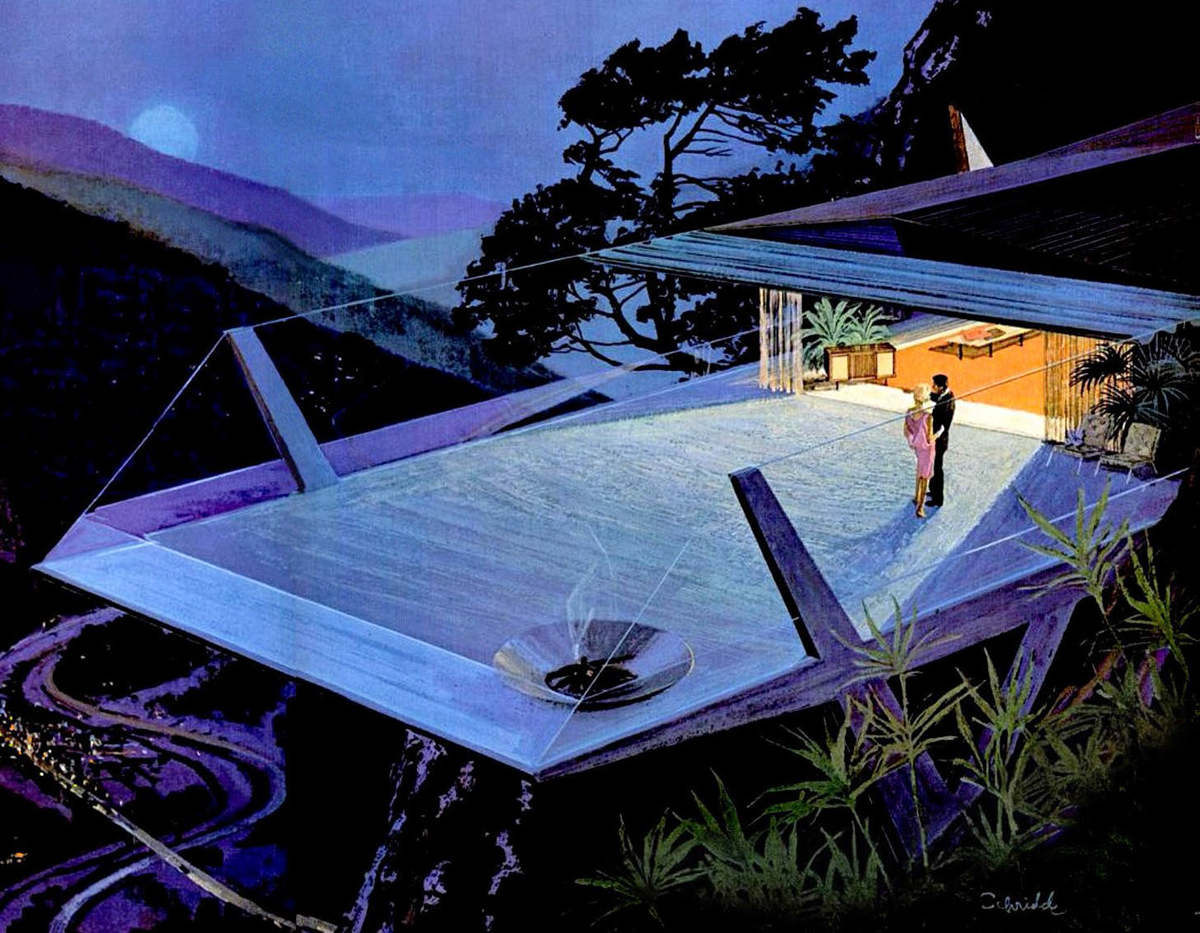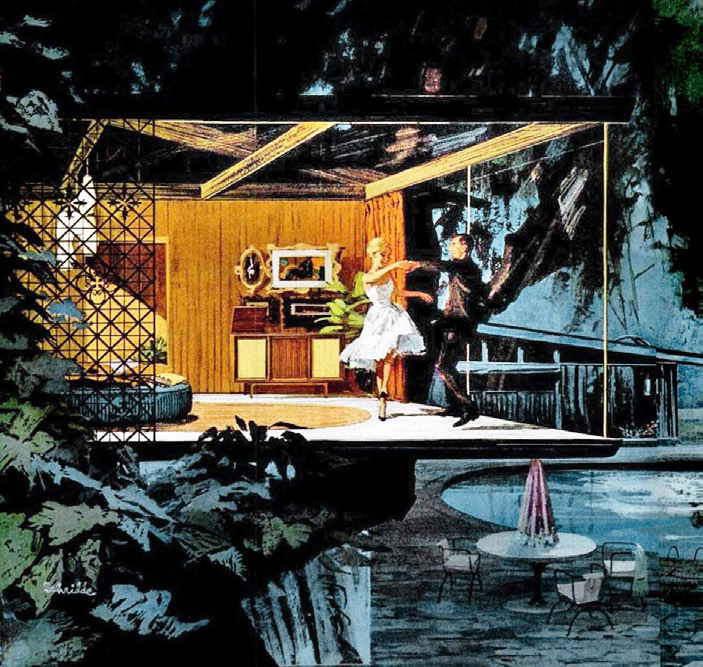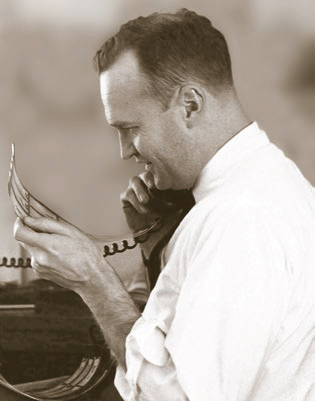Dreamscapes of Elegance
 |
|
|
|
|
 |
|
|
 |
 |
|
|
They have risen in Palm Springs, brand new 'Eichlers' inspired by the homes built by Joe Eichler during the mid-century. There's even a developer in Idaho who's building Eichler Country Club Estates, "an urban micro-development" inspired by Joe's original homes.
But come on, developers. The world already has 11,000 perfectly fine, real Eichlers. If you want to revive something from the mid-century that will truly bring something new to the world, how about building a few Schriddes?
Charles Schridde (1926-2011, pronounced Shrid-ee) may be the greatest mid-century modern residential 'architect' you've never heard of. That's because he wasn't an architect and he never intended his designs to be built. So none were.
As far as we know.
And it's a crime that they weren't.
"I, for one, wouldn't mind living in a pad like the ones Mr. Schridde envisioned," design fan Chris Alm confessed on his blog Ultra Swank. "I guess the closest thing would be [Walt] Disney's [Monsanto] House of the Future."
At the start of the 1960s Schridde emerged as perhaps the greatest designer of wild, elegant modern homes who never studied architecture and was far from being a committed modernist.
But somewhere, deep inside, it's clear that Schridde felt the spark of the modern. How else could he have devised what Santa Monica graphic designer Steve Kosareff calls the mid-century modern "dreamscapes" that ran in a series of ads, each one an expansive two-page spread, for Motorola televisions and hi-fi stereo consoles in Life and Saturday Evening Post magazines in 1961 and 1962?
"They were unique," says Kosareff, author of the book Window to the Future: The Golden Age of Television Marketing and Advertising. "I don't remember anything like them."
"They have a very landscape, wide-screen format, so your vision is surrounded in it when you're looking at it in a magazine."
According to the firm Motorola Solutions, which retains the Motorola archive, their 'futuristic lifestyle' series of ads incorporated up to three other artists—Eyvind Earle, George Bertels, and Leon Deller. (For more information about them and their work, see the sidebar and spread at the end of this article.)
The campaign was handled for Motorola by the Leo Burnett Company, a marketing firm based in Chicago.
What does a Schridde look like? Often the home is placed in an exotic, sometimes near-unbuildable setting—something Joe Eichler avoided. Schridde's homes dangle over the edge of cliffs, hover over cities, or are built atop waterfalls or incorporate waterfalls into their décor.
But Schriddes are more than outrageous. They can suggest intimacy à la Frank Lloyd Wright, provide playful curves à la John Lautner, or introduce imposing interior boulders à la Albert Frey.
And just as Eichler's photographer, Ernie Braun, populated Eichler homes with beautiful people doing ordinary suburban things—creating art, enjoying cocktails, spending time with the kids—Schridde too populated his homes with beautiful people.
Except Schridde's people were always watching a Motorola TV or listening to a Motorola hi-fi—sometimes while dancing. You will occasionally see a character in jeans in a Schridde home, or a woman exercising in leotards. But in the main, elegance is the word.




